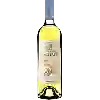
Domaine HaugarotEsbérit
This wine generally goes well with
Details and technical informations about Domaine Haugarot's Esbérit.
Discover the grape variety: Mondeuse noire
Cultivated for a very long time in Savoie, it is not the black form of mondeuse blanche and Mondeuse grise is a natural mutation of mondeuse noire. According to Thierry Lacombe (I.N.R.A./Montpellier), the latter is the result of a natural intraspecific crossing between the black tressot and the white mondeuse. Mondeuse grise and Mondeuse noire are both registered in the official catalogue of wine grape varieties, list A1.
Informations about the Domaine Haugarot
The Domaine Haugarot is one of of the world's greatest estates. It offers 8 wines for sale in the of Jurançon to come and discover on site or to buy online.
The wine region of Jurançon
The wine region of Jurançon is located in the region of Pyrenées of South West of France. Wineries and vineyards like the Domaine Didier Dagueneau (Louis-Benjamin Dagueneau) or the Domaine de Souch produce mainly wines white, sweet and red. The most planted grape varieties in the region of Jurançon are Petit Manseng, Gros Manseng and Manseng, they are then used in wines in blends or as a single variety. On the nose of Jurançon often reveals types of flavors of pineapple, oil or quince and sometimes also flavors of nectarine, grass or salt.
The wine region of South West
The South-West is a large territorial area of France, comprising the administrative regions of Aquitaine, Limousin and Midi-Pyrénées. However, as far as the French wine area is concerned, the South-West region is a little less clear-cut, as it excludes Bordeaux - a wine region so productive that it is de facto an area in its own right. The wines of the South West have a Long and eventful history. The local rivers play a key role, as they were the main trade routes to bring wines from traditional regions such as Cahors, Bergerac, Buzet and Gaillac to their markets.
The word of the wine: Oxidative (breeding)
A method of ageing which aims to give the wine certain aromas of evolution (dried fruit, bitter orange, coffee, rancio, etc.) by exposing it to the air; it is then matured either in barrels, demi-muids or unoaked casks, sometimes stored in the open air, or in barrels exposed to the sun and to temperature variations. This type of maturation characterizes certain natural sweet wines, ports and other liqueur wines.














